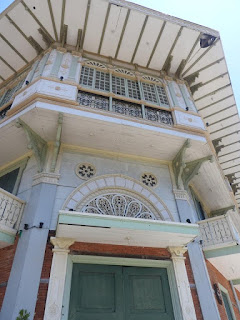My Visit at Las Casas
I had given the chance to visits Bataan’s attractions, the Las Casas Filipinas de Acuzar.
The 400-hectare property started in 2003 as a hobby of Jose “Gerry” Acuzar, owner of one of the leading construction companies in the Philippines. He first started collecting Spanish colonial-era mansions and other architectural structures, as well as other native buildings. His collection gradually expands until he developed it to resemble a settlement during the country’s colonial period. In 2010, the property was opened to the public and is now an open-air museum and heritage park. This also have several resort facilities such as restaurants, beach side attractions, swimming pools and room accommodations. They even have some of the restored houses available for those who wish to stay and have a nostalgic vibe at the Las Casas.
During our visit, we are provided a walking tour of the place to fully appreciate the houses as well as the story behind the properties. According to our guide, she said the painstaking process in transferring and restoring the homes to its current state. She said that most of the houses were carefully dismantled on-site, with its materials numbered brick-by-brick, piece-by-piece. Then the houses are transported to Las Casas where they are reassembled and restored by a team of historical architects, craftsmen and artists.
What impressed me the most is how they managed to restore some of the houses despite their dilapidated states. Examples of which are the Casa Hidalgo and Casa Bizantina. The Casa Hidalgo, which once stood in Quiapo, Manila, was once the UP School of Fine Arts. Despite its prestigious past, it fell into disrepair and was converted into several establishments: dormitory, bowling alley, movie theater and even a location for pornographic movies. Today, it has recovered and now used as an art gallery venue and function hall.
Another interesting point on their restorations is on how they can manage to restore houses despite little reference. One great example is Casa Mexico, where most of its structure were found at a local junk shop. Compared to the other houses, the restoration team’s point of reference for this was an old photograph and they were able to reconstruct the house to its former glory.
Another house, the Casa Luna, was named after the famous relatives of its owners: the Luna brothers (Gen. Antonio Luna and artist Juan Luna). What the house showcased was not about their family, but on the lifestyle of the Filipino elite during the colonial period. The house have narrow hallways at the sides of the house as meant as passageways for the house’s servants.
Truly, my visit at Las Casas provided me with much appreciation on my roots and culture, as well as reflect on how we treasure what’s important to us.



















